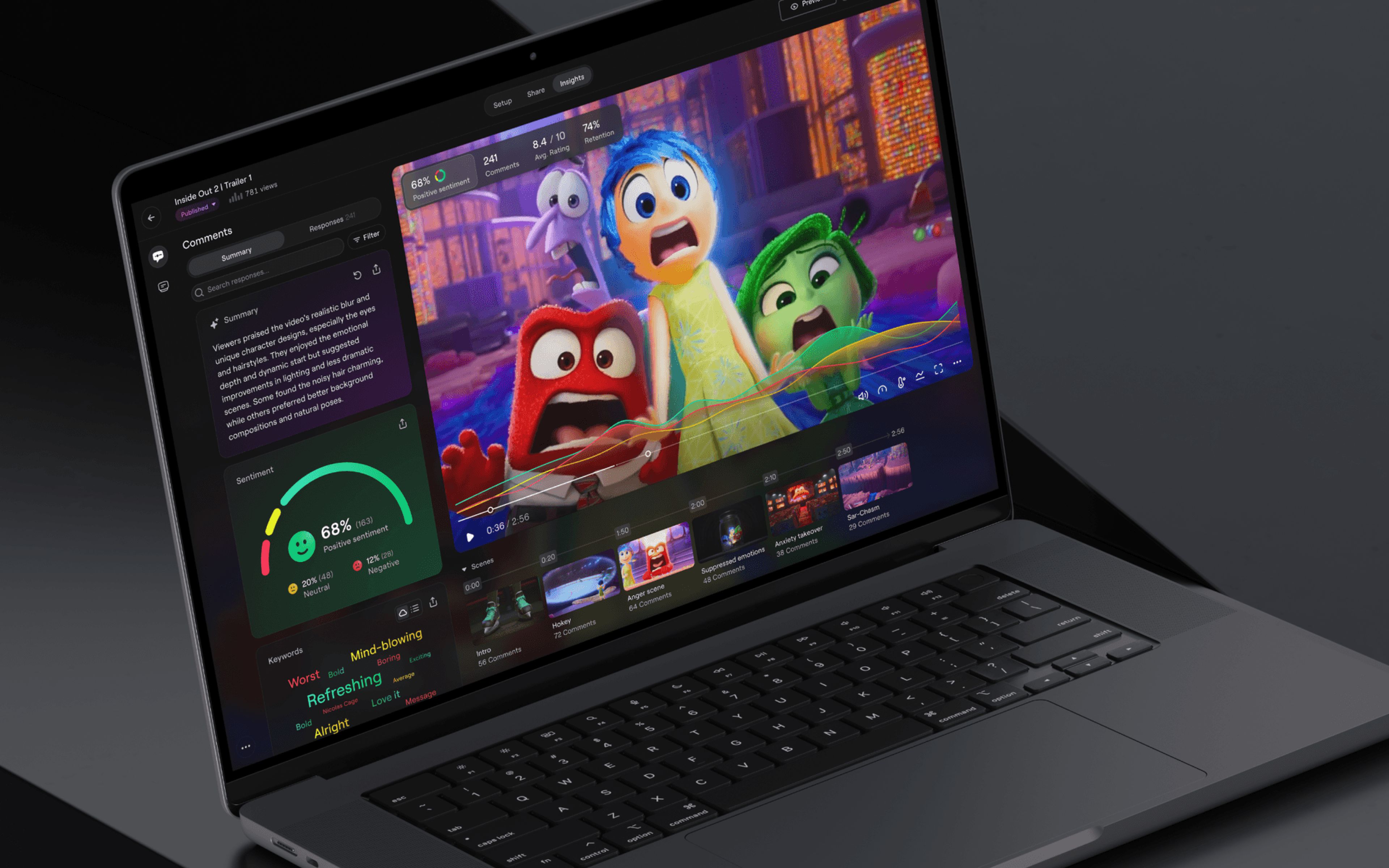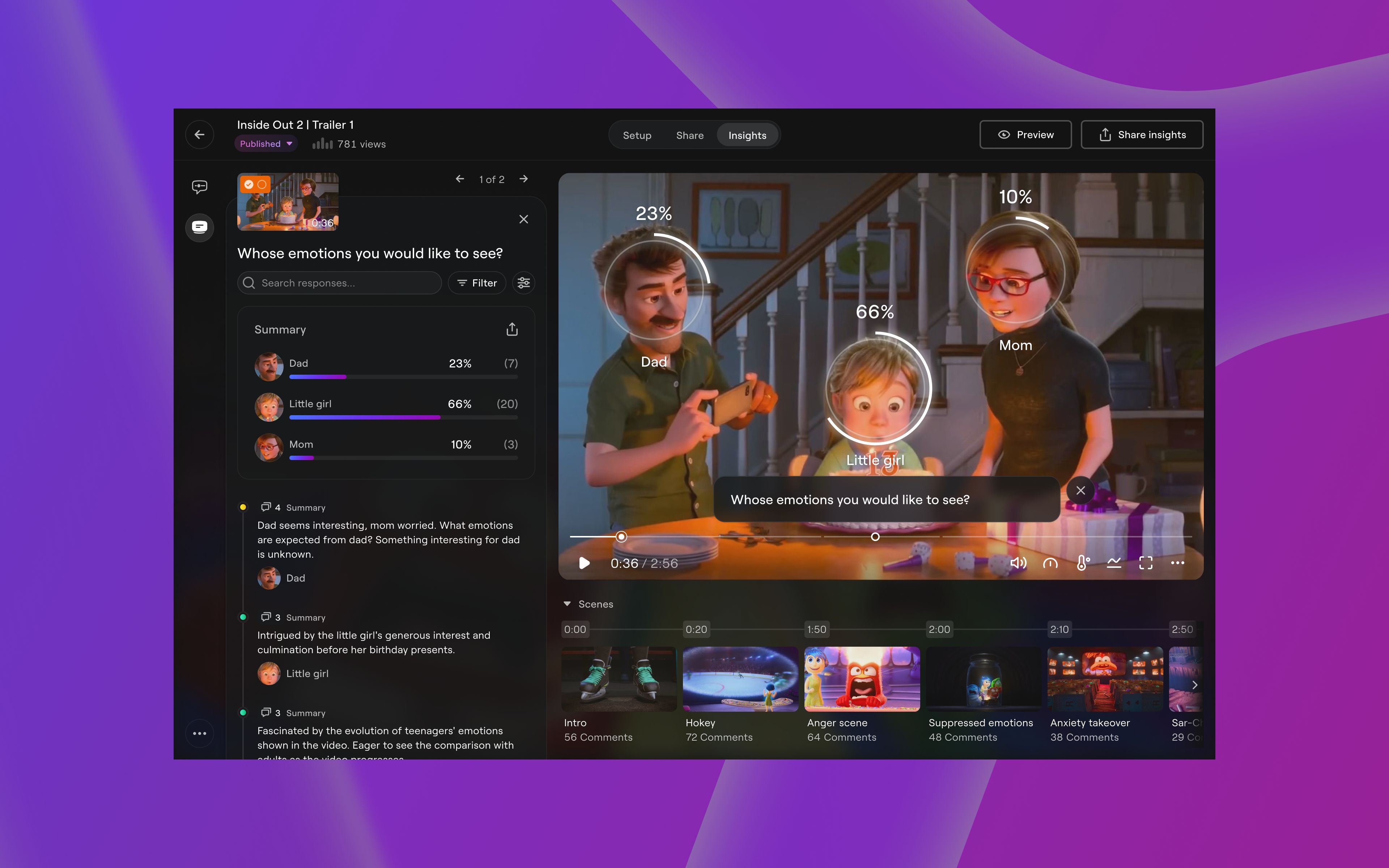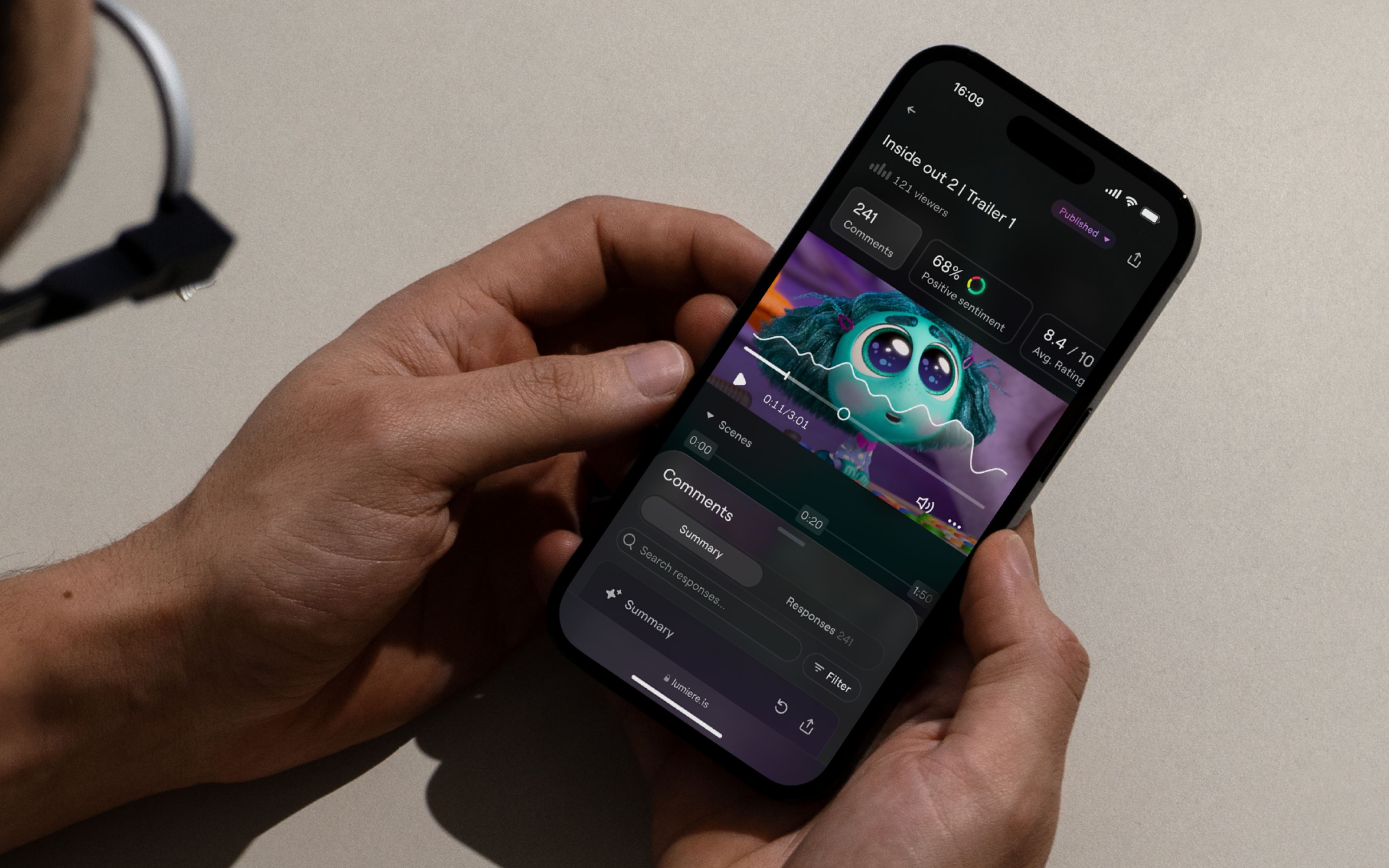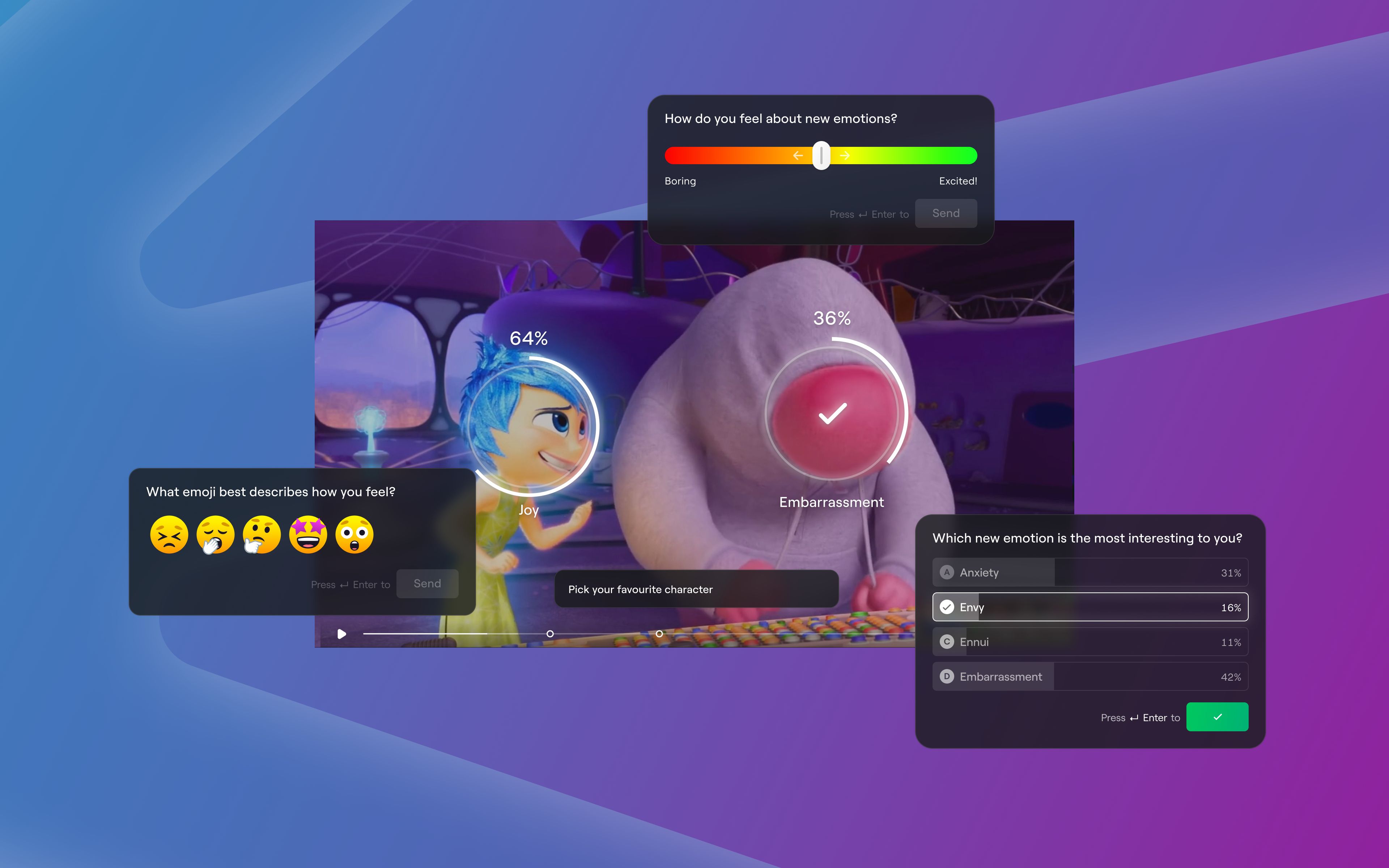
Designers
Oleg Gasioshyn, Vitaly Vaskiv, Mariia Makarikhina
Year
2025
Category
Product
Country
Ukraine
Design Studio / Department
The Gradient
»Lumiere fills an industry gap by providing a flexible, intelligent platform for video-based user research that enables companies to efficiently collect, analyze and visualize feedback. Seamless integration of GenAI for conversational insights and summaries improves decision making. Clear KPIs, such as reduced setup time and improved feedback quality, demonstrate its impact. The state-of-the-art, aesthetically pleasing interface and comprehensive design system ensure a delightful user experience. Lumiere sets a new standard for video-based research tools in terms of functionality and joy of use.«
UX Design Awards Jury 2025 Spring
And the award goes to...

Three questions to the project team
What was the particular challenge of the project from a UX point of view?
Insights from viewers are at the core of Lumiere’s video intelligence platform which brought us a few UX challenges. First was how do we get viewers to leave detailed and high-quality feedback about the video? To address it, we introduced ‘AI conversations’ that generates personalized follow-up questions to encourage viewers to provide more detailed and context-rich feedback.
Another important challenge was presenting the analysis and insights from videos for researchers and clients. We designed both glanceable and in-depth formats for video analytics that enables quick understanding of video performance through AI summaries and average metrics, as well as detailed review of individual comments for more thorough analysis.
What was your personal highlight in the development process? Was there an aha!-moment, was there a low point?
The most important aha! moment came when we realized AI’s potential extended beyond merely summarizing feedback to actively generating more viewer insights.
Our approach leverages Lumiere AI to engage viewers in a dynamic dialogue based on their initial comments. When a viewer leaves feedback on a video, Lumiere AI analyzes both the comment and the video content, then poses tailored follow-up questions. This interactive process uncovers deeper, often implicit meanings within viewer responses, providing a richer understanding of audience experiences.
We spent a lot of time refining the interface. Undertaking two major redesigns within two years demonstrates our team’s dedication to continuous improvement and high standards for our work.
Where do you see yourself and the project in the next five years?
We have a lot of features in mind to build, such as ability to compare videos or to recruit viewers in app.
The evolution of our platform is closely tied to advancements in AI technology as it would bring a lot of opportunities to simplify researchers’ workflows with better video understanding and automation tools. For example, asking “What do people think about this character?” Following up with “How can we improve it?” to get actionable suggestions for enhancing your video content. Or setting research goals and having AI automatically configure the video and insert relevant questions at optimal moments.
Some of those improvements will take us the next five years and more.


